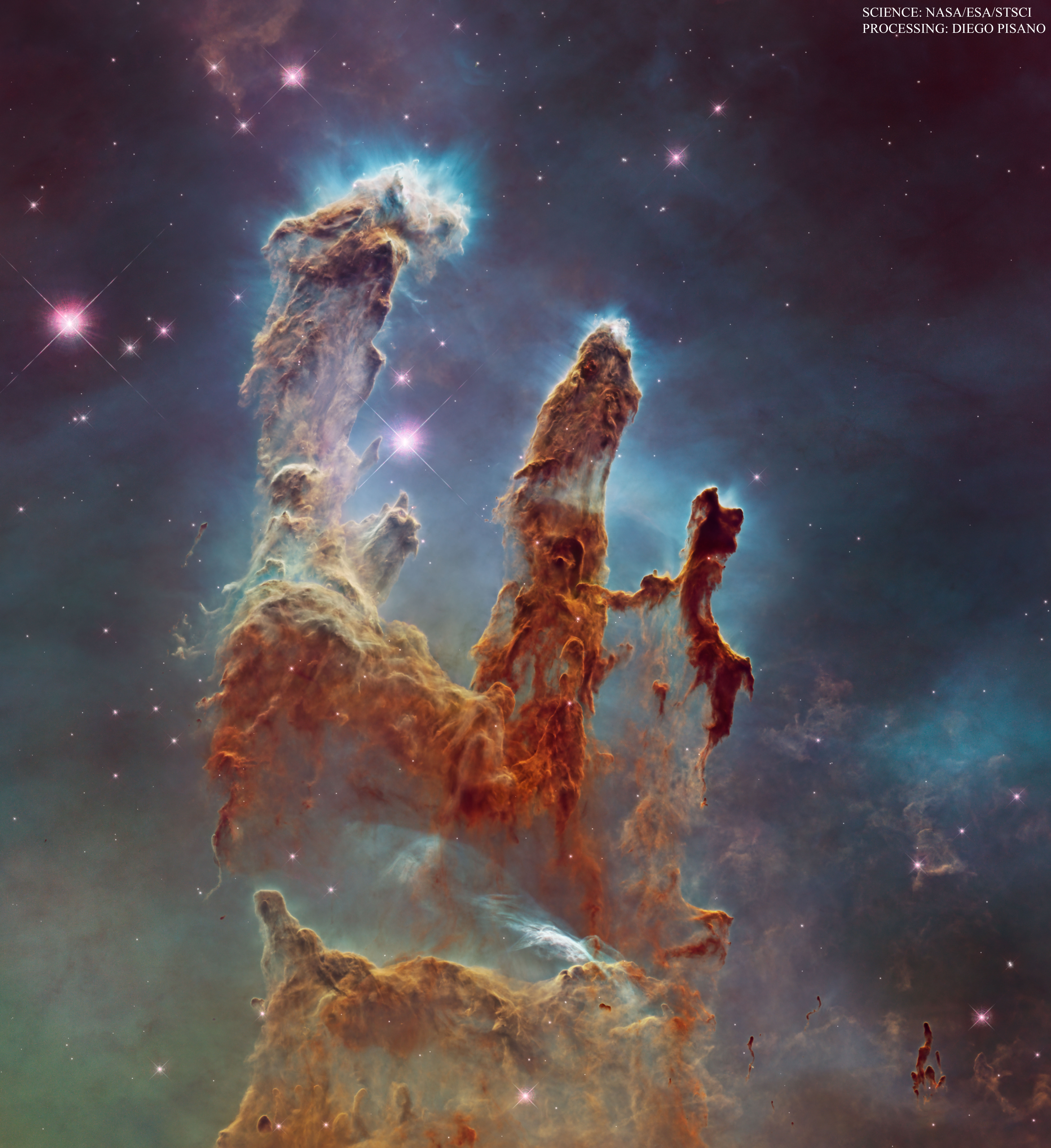The Jeans Criterion

-
a criterion will be found that can be used to predict under what physical conditions an interstellar cloud can collapse. This criterion is a product of the British scientist Sir James Hopwood Jeans (1877 – 1946).
-
Start with a homogeneous cloud of mass
The Jeans Criterion
-
Stable - Start with a homogeneous cloud of mass
-
Unstable If at some point
- gravitational energy dominates the thermal energy
- cloud will be unstable and collapse due to gravitational pull
Recall we can define the gravitational energy for the cloud:
The Jeans Criterion
Assume isothermal and have constant density, the thermal energy is:
where
Collapse can occur when:
The Jeans Criterion
We can further simplify this by expressing in terms of only
However, recall that the radius is
The Jeans Criterion
- In order for a cloud to collapse, its mass must be larger than Jeans’ mass:
- Clouds with larger
- Clouds with larger
Interstellar cloud collapse
We can describe approximately six stages of Star Formation.
Star formation stars with a perturbation: a nearby shock/collision moving the cloud out of HSE and inducing collapse is the first stage.
The Jeans mass concerns the mass involved in such a perturbation. If not, the filiments will undergo free-fall collapse described by the dynamical timescale,
Cloud fragmentation

As the density of the collapsing material increases, the Jeans mass decreases.
-
The cloud begins to fragment into small pieces, which individually continue to collapse until fragments are
-
This process makes it possible for a large number of stars to form from a single molecular cloud
M16: Pillars of Star Creation - Image Credit: NASA, ESA
Formation of a protostellar core

Looking only at collapsing cloud fragment, as the density continues to increase, the gas becomes opaque to infrared photons.
-
Radiation is trapped causing heating and increase in gas pressure that slows collapse and the and the fragment comes into HSE.
-
The fragment continues in HSE and quasi-static contraction. A protostar is born!
Herbig-Haro 24 Protostar - Image Credit: NASA, ESA
Accretion

Next phase is dominated by accretion as gas falls onto the protostar. Due to conservation of angular momentum, the accretion leads to the formation of an accretion disk.
- Accretion disks are observed around most young stars, primarily in inrared and submillimeter wavelengths.
The protostar within the dark cloud L1527 is embedded within a cloud of material feeding its growth. - Image Credit: NASA, NIRCam
Accretion

The luminosity of this object during this phase is powered by the accretion:
during which the core continues to heat up adiabitcally (
The protostar within the dark cloud L1527 is embedded within a cloud of material feeding its growth. - Image Credit: NASA, NIRCam
Dissociation and ionization
As the protostellar core continues to contract the gas behaves like an ideal gas.
-
However, at
-
Once
-
The final result is ionization of the H and He at
Pre-main sequence phase
Eventually, the accretion will slow down and stop. The protostar is now a pre-main sequence star.
It's luminosity is now given by the gravitational contraction and according to the virial theorem follows
- At such low temperatures, the opacity of the of pre-MS star is very high throughout, radiative heat transfer is inefficient and the star is fully convective throughout.
Fully convective stars: the Hayashi line (track)
Fully convective stars of a given mass occupy a nearly vertical line in the HR diagram (
-
the region to the right is now as the forbidden region and fully convective stars in HSE cannot ocupy.
-
to the left, these stars are not fully convective and some regions must be radiative.
-
We can esimate the lifetime on the PMS as
Fully convective stars: the Hayashi line (track)

The position of the Hayashi lines in the H-R diagram.
-
The slope is not exactly constant due in part to neglect of ionization zones and superadiabicity regions in the outer layers. Credit: Onno Pols.
-
massive protostars reach the ZAMS much earlier than lower-mass stars
Fully convective stars: the Hayashi line (track)
A protostar leaves the Hayashi track
-
when it either deviates to the Henyey track
- characterized by a slow collapse in near hydrostatic equilibrium, approaching th main sequence almost horizontally in the HR diagram (i.e. luminosity remains almost constant)
-
nuclear fusion occurs and the star reaches the main-sequence.
-
This differences are all reliant of the initial mass of the star!
Fully convective stars: the Hayashi line (track)

HRD from Stahler 1988 showing low mass stellar evolution tracks along the Hayashi and Henyey tracks until reaching the Main Sequence.
- Also shown are the observed locations of a number of T Tauri stars.
- T Tauri Stars are those that are still contracting towards the main-sequence.
In-Class Assignment 12
In class: Work on ICA here with groups per usual. Discuss conceptual questions together and prepare answers to share at the end of class.
- Choose someone that will report out the groups responses ahead of time!
After Class: Due: End of Day to D2L
Note: ICAs will be shorter with the goal of: reducing focus on coding, increasing time for discussion and interpretation of results / plots in groups and as a class.